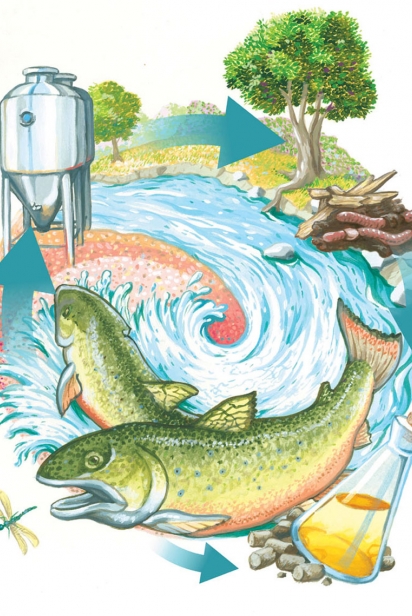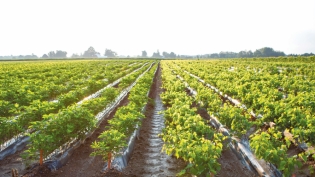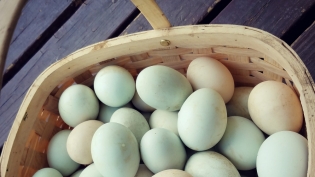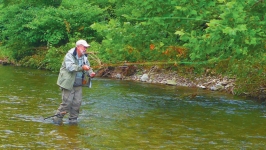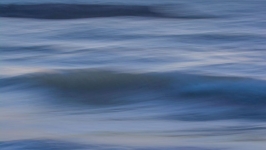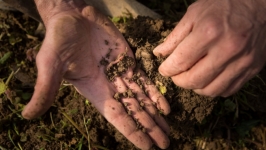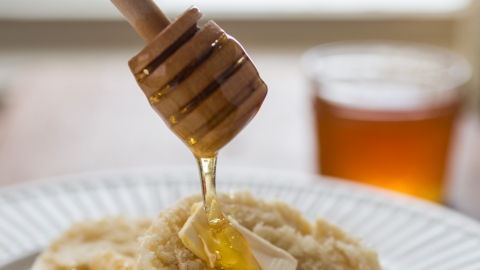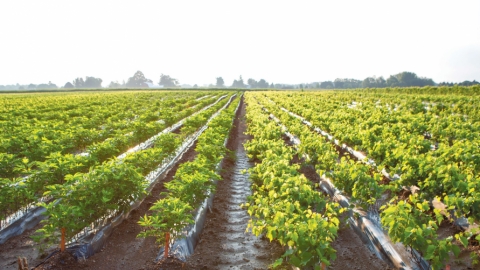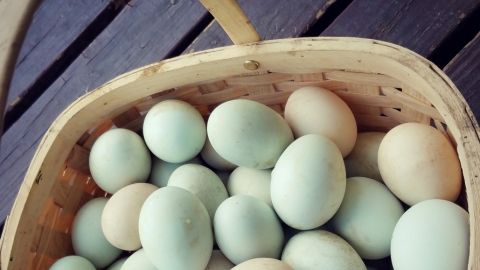Timberfish Technologies: Turning Brewery Waste Into Fish Food
The average unit of seafood sold in the U.S. travels over 5,000 miles from where it’s sourced to where it’s consumed. If that’s not disheartening enough, in parts of the ocean there are six times more plastic than plankton. “As the plastic gets ground up into tinier pieces, it enters into the food chain,” says Jere Northrop, managing member of TimberFish Technologies. “It can pass through the blood-brain barrier and get into the nervous system, and nobody really knows what the impact of that’s going to be.”
I know. This is starting to sound like another food system horror story, where you’re bombarded with troubling stats, discouraging prospects and threats about how things are bound to get worse.
But thanks to a partnership between TimberFish Technologies, an innovative aquaculture and wastewater treatment system, and Five & 20 Spirits & Brewing in Westfield, there’s a new story about seafood being written—right here in Western New York.
Working with Five & 20, New York State’s first combination winery, distillery and brewery, TimberFish has developed a way to compost wastewater and waste grain piped down from Five & 20’s distilling operations—the disposal of which used to cost thousands—and turn that waste into profit-generating fish. The byproducts of distilling, combined with sustainably sourced wood chips, feed a host of microbes. These then feed invertebrates, which in turn feed the growing fish. Fish waste is removed from the water and cycled back through the system, allowing clean water to be released into the ecosytem and eliminating the contamination issues sometimes associated with aquaculture.
“The Five & 20 waste stream is ideal, because they have a very clean operation. There are no contaminants or harmful chemicals in their process, so the waste stream that comes down doesn’t have any of that,” explains Northrop. “By controlling the inputs, you control what goes into the fish, and by running this through an advanced wastewater treatment system, we discharge very clean water into the environment.”
Last September, bass, perch, catfish fingerlings were introduced into the TimberFish system, and later joined by trout. Future plans include also raising Atlantic salmon, brook trout, Arctic char and even shrimp. While the current fish were sourced from a highly reputable, environmentally sound outside provider, an anticipated goal is to create an onsite hatchery to completely localize the process.
Other countries have expressed interest in the TimberFish system, and SUNY Fredonia has set up an onsite learning lab. Plans are also in the works “to develop more of a tour, to provide an educational component and to get people excited in grassroots efforts and advocacy for food that’s raised in a conscious way,” says Mario Mazza, general manager and enologist at Mazza Vineyards and Five & 20.
To learn more about the system and its potential for our region, I spoke with Northrop, who created this system, and Mazza. Our conversation has been edited for clarity and length.
Katie Chriest: You initially planned to feature your first fish this spring or summer at Five & 20’s onsite restaurant, Bird, then eventually to sell to regional grocery stores. What updates can you provide regarding those goals?
Jere Northrop: The facility ran colder than anticipated, which means that the growth rate of the fish was slower. We have a few hundred fish in, and those are all doing fine, but we’re probably looking at late summer/ fall before we’ll have anything available at Bird.
Mario Mazza: It’s not a bad thing that these things are developing slowly, because there are pieces to figure out in terms of getting to that larger volume of fish production. Philosophically, it actually ties well to at least two of the three beverages that we produce: whiskey and wine. You don’t rush them, you learn to be patient.
KC: Jere, you’ve described the potentials of this technology to “expand the food chain” and provide “an insurance policy for the future.”
JN: If you look at the rising population pressure and existing modern agriculture, the land you can use for food production is mostly under cultivation and in use. One advantage is that [this model] can bring land that is not suitable or used for food production into play for seafood production.
KC: Mario, can you talk about how this connects to your passion for maintaining local agricultural land?
MM: I was fortunate; I’ve had the opportunity to travel and live and work overseas. One of the things I realized is that this part of the world along Lake Erie is a really wonderful and gorgeous place.
But there are some challenges for one of the main agricultural industries here: the grape industry. It’s had a long, successful history in many ways, but it’s not without some hurdles in the future. We might buy 500 or so acres worth of agricultural product—grapes, grains, hops—doing what we can to ensure a viable economic future for those growers. We don’t want to see that land, that agriculture, collapse.
The TimberFish model, while it could be deployed anywhere, could potentially lead to the development of a largerscale system in this community, which could be an economic driver and an employment opportunity, and also, as Jere mentioned, utilize land not already related with agriculture. Acting locally and making whatever positive impact you can is important, and I see this as very complementary to the things we do already.
KC: Jere, I came across an essay you wrote in 1989, where you state, “the world of tomorrow will be run by technologies which are inherently ecological, sensitive to our aesthetic, emotional, and conscious spirit. They will deal with our environment as a synergistic extension of ourselves, not as a receptacle for offensive and hazardous wastes.” Are you seeing TimberFish as the fulfillment of this vision from almost 30 years ago?
JN: This is something I’ve been working on for my whole life, and I’m finally getting a vehicle where hopefully we can start to educate people.
This is mission-oriented. We believe it’s going to make a difference. And we realize very much that to make a difference, it has to be a huge economic success. Part of our mission right now is that you can’t change the existing paradigm and the pollution and the problems that we have unless you show that it’s in everybody’s best interest, and in their best interest economically, to do things this way as opposed to the way we’re doing them now.
So that’s where it’s all come together. TimberFish is a hoot. I don’t view it as a job, and I don’t consider that I’ll ever retire. I am extraordinarily lucky to be in the position to have a shot at this.
KC: Mario, you and your family have a long history of investing in our region—often with bold, unpredictable moves. Where do you get your inspiration, and what would you like to convey to others who have a vision?
MM: The person who’s truly my inspiration is my father. Over the past four-and-a-half decades, he has taken chance after chance, and he often sees something that nobody else quite sees yet.
You’ve got to take a chance sometimes—calculated risks, though, not jumping in blindly. My dad and I looked at each other about halfway through establishing Five & 20, when we had two more years to get to the point where the facility was producing and functioning as it should be. I said, “You know, we’re kind of between a rock and a hard place.” And he replied, “Well, your grandfather always said, ‘If you’re gonna drown, you might as well do it in deep water.’“
It’s this sentiment that we’re gonna find a way. It may not be comfortable, it may not be what other people see, but we’re going to find a way. I think that’s kind of the attitude that we have.
JN: When I first met Bob and Mario there was a recognition of compatibility there. You make those kinds of gut decisions, and I’ve learned really to count on those. It’s been a tremendous working relationship philosophically. That’s why we chose to do this with them, in this particular location. And the fact that it’s the town that I grew up in was a real surprise to me, and a delight.
MM: What Jere’s not telling you is that he’s really doing it because it’s very convenient to grab a cold beer when he’s done at the end of the day. [laughs]
JN: I used to work with manure systems, so this is much, much better. [laughs]
> Five & 20 Spirits and Distilling: 8398 W Main Rd (Rt. 20), Westfield; 716-793-9463



